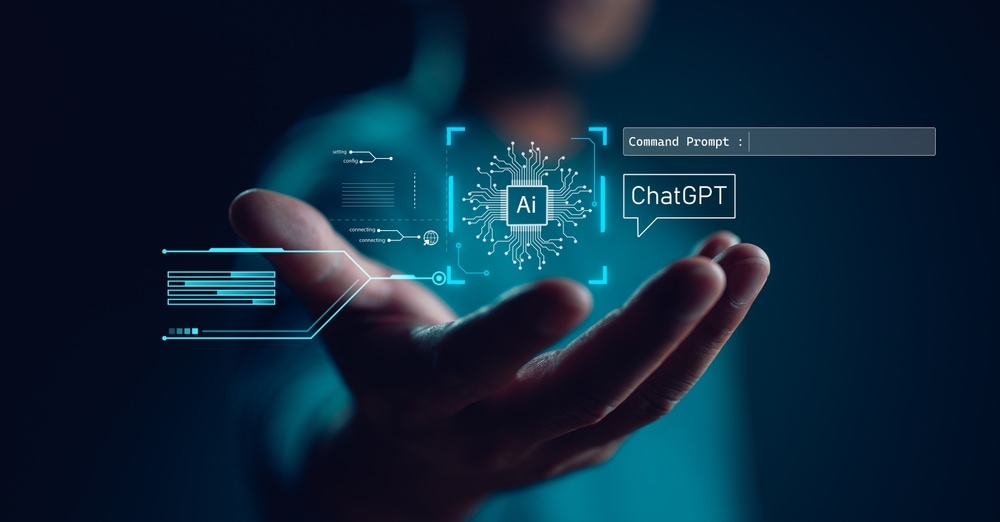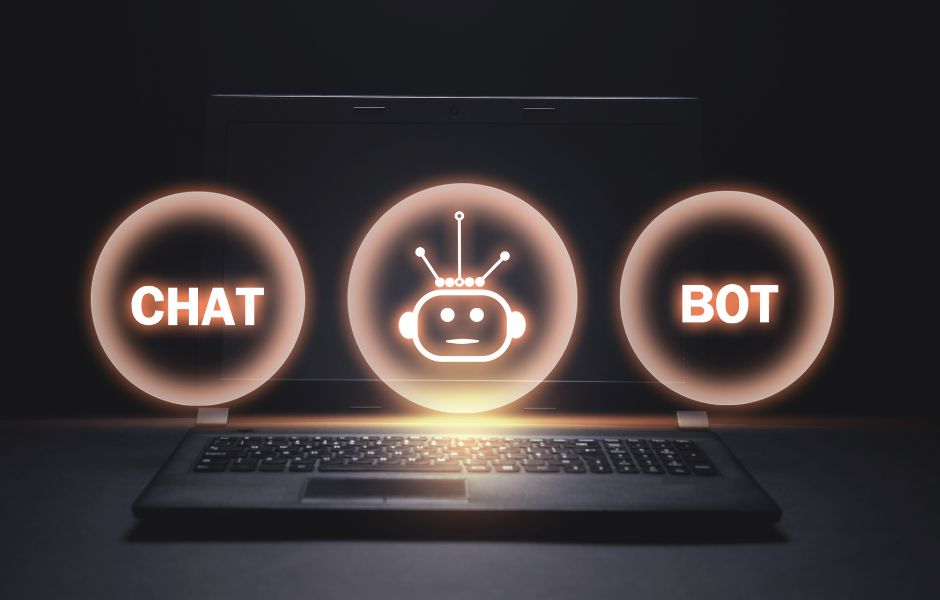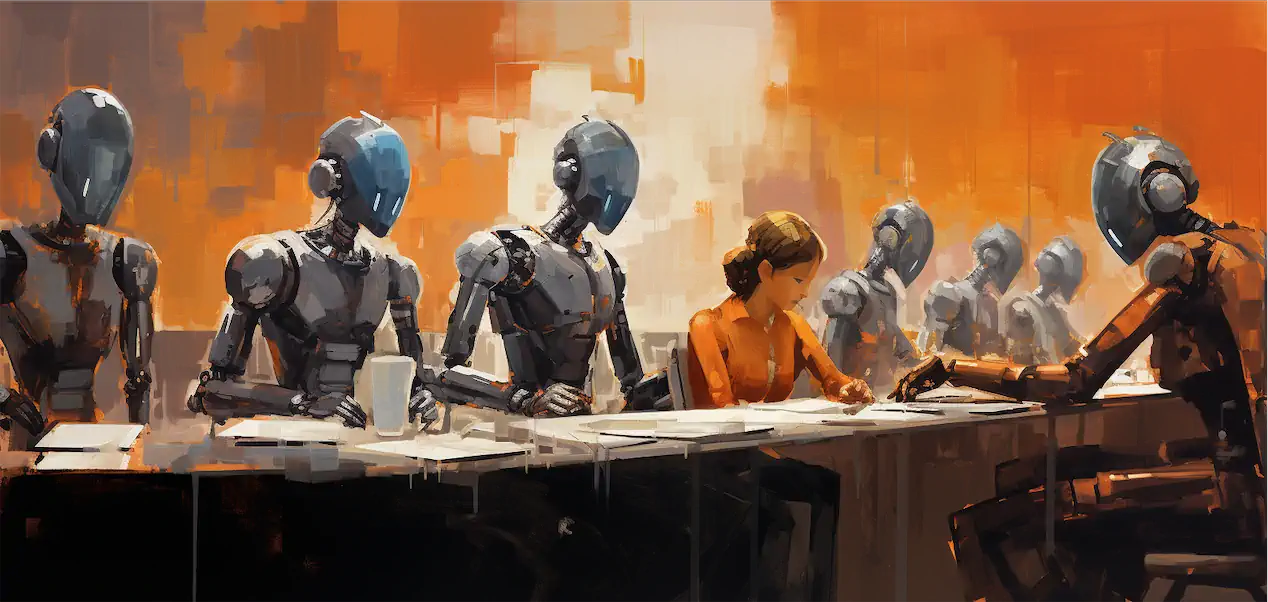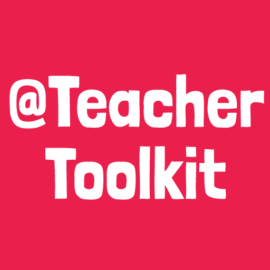In a previous article, we predicted that the major publishers in Denmark could easily train their artificial intelligence on their books. Thus, teachers and students could chat along with the book. This is now a reality, as Praxis has just implemented a ChatGPT in their e-book for the subject Marketing B.
However, this article will not go into depth about their integration, but I will try to look at what happens to the learning aids when they are enriched with artificial intelligence. Is that a good idea? We do not know how students will use the functions in everyday life because it is very new that it is possible to use language models in learning aids. Some students will use it to quickly prepare a submission assignment, while others will increase their learning and get stylized content and a better overview of the subject.
In the following, I examine both ethical challenges and the many opportunities that technology provides. Finally, I would like to raise several ethical issues that are important to bear in mind.
Development and role of learning aids in teaching
The development of new learning resources is costly for analog and digital versions because you have to adapt the content and level to the relevant professionalism while also requiring a lot of professional knowledge of the domain. Subsequently, it also requires an ongoing adjustment of the content, and in some subjects, it goes so fast that it can be difficult to keep up. The author also draws up a progression in learning, ensuring that students are constantly within the zone of closest development. It requires knowledge and understanding before you can work on the next chapter.
In teaching, the individual teacher brings the learning tool into play, continuously adapts it to the student's level, and supplements it with other content where the learning tool is insufficient. But the primary role of the learning tool (whether it is a book, a digital i-book, or something else) is that we have a common reference point in teaching. A well-known starting point for further discussion and processing of the topic and a measure of the amount of material used before an exam.
The above is how we work with learning aids in teaching, and it ensures that we share the teaching content. However, it also means we have learning resources not adapted to the students' different levels. Some students will find it difficult to understand the content, while others will find it too easy. In teaching, the teacher's role is to differentiate the content and help the student at the student's level.
Textbook authors may be reduced to a fact box
When training a language model with texts, the text is transformed and reduced to smaller tokens. A token is a mathematical representation of a word, parts of words, or entire sentences. In this process, inaccuracies and nuances may not be included; thus, the text can change character. Although the author of the teaching tool has made an effort to write good texts, these can be influenced by the language model and presented in a new way.
There are very few European language models, and none are on par with the GPT-3.5 and GPT-4 models from OpenAI. Therefore, it is precisely GPT-3.5 (the cheapest version) that is currently being used on a large scale worldwide to get artificial intelligence into IT systems. The challenge is that GPT-3.5 is based on American values and ethics, and it will thus affect what students are allowed to write and the answers they get. It may, therefore, mean that students who chat exclusively with the learning tool can get different versions of the text than intended. Or there are topics the language model cannot process or wants to write about. For example, the language model will avoid inappropriate, sexual, or violent content. We may end up with a layer of censorship being introduced over our teaching materials, which is not always clearly delimited and thus also very difficult to handle in teaching.
When language models write texts for students, we may ask ourselves whether an author must spend time writing the text. You could give the language model a series of facts and then let artificial intelligence wrap and adapt the content to the students. Subsequently, publishers can maintain the content by asking ChatGPT to make an update with new data. There is, therefore, a challenge in what we want to do with the teaching aid. Perhaps we should rethink the role of learning technology so that it is adapted to the new technological possibilities.
Artificial intelligence offers new opportunities for customized content
It can give students and teachers new teaching opportunities when the learning tool contains artificial intelligence. Students can work with the content with the language model and thus get a personalized version of the texts. Previously, students may have used Google if they had problems understanding the content, but now communication can take place with the learning tool, not least in the learning aid. It is perhaps worth noting that if the language model has processed the entire book, the student may be presented with content that progressively does not make sense. Therefore, it could be advantageous to allow the teacher to limit the language model to use only certain chapters.
Since the student does not have to leave the learning tool to seek an understanding of the content of the text, it will be a safe place to ask questions. We are thus dealing with a technology that greatly supports the individual's way of acquiring knowledge (so far only through text), and with the possibility that the student changes the level of the subject matter along the way. For example, the student can write that he or she wants the content at a lower level or have the language model develop an expanded explanation of words, phrases, or concepts. Here, however, students must understand how to write to a language model and know how to ask a question. Small nuances can produce very different results, and if the student is not trained in these options, they will also get results accordingly.
A traditional approach to reading texts has been to immerse oneself in the content until it makes sense. One could, therefore, end up reading the same text many times. This requires a lot of effort, and we may see a fundamental change in how we access and process texts in teaching.
However, the student may also end up with a more complicated answer than the author had intended, as answers change and adapt to each question in the text. In this way, the teacher may find it difficult to help the individual student because he or she has to deal with endless ways of saying the same thing. Students may, therefore, sit with their own ChatGPT version of the texts and may lose some of their understanding.
Learning resources of the future?
The above is one of the first steps to make digital learning tools with built-in artificial intelligence, and we will see many more publishers develop new solutions. However, we must be careful not to proceed too quickly because how students will receive and use the technology is still very unclear, as how teachers and teachers play in the interaction with language models because completely new dynamics will arise in teaching.
The learning resources are moving towards becoming personalized and perhaps even hyper-personalized and thus tailored to the individual student. This personalization has been the teacher's job in the past, but we will see algorithms that will take over more of these roles. In the longer term, AI will emerge that acts on prior knowledge of the student's level and challenges, provides adaptive feedback, and provides adaptive support where necessary.
Therefore, there are several ethical questions we can use to find out whether we should wait or whether the technology is mature enough:
- How does the learning tool affect the teaching, and does it give something to the teaching that would otherwise not be possible?
- How will students use artificial intelligence in the learning tool?
- What will this mean for the function of the learning aid in teaching?
- How will this affect students' way of seeking help? Will the language model take over too much of the teacher's work?
- Will we allow a language model based on American values and ethics to be deeply integrated into our teaching?
- Do we lose some progression when the language model knows the whole book?
- Do we give a lot of data to the tech companies when we let students use a commercial product?
- Do students become independent when trained to use artificial intelligence without reading the source?
It is also necessary to discuss whether it is the publishers behind the teaching aids who should introduce artificial intelligence in schools. Few schools have had time to make policies for artificial intelligence, and the technology is moving so fast that it needs to be constantly revised. Here, as a minimum, it should be left up to the teacher to be able to activate or deactivate the options. Individual schools should also be able to opt out of the activation of AI for all learning materials.
Sources




Gissel, S. T. (2022). Didaktiske læremidler. Lokaliseret den 11. august 2022 på: www.laeremiddel.dk/laeremidler/laeremiddeltyper/didaktiske-laeremidler


https://www.fierceeducation.com/leadership/future-ai-personalized-learning-higher-education
https://connect4education.com/teachers-are-you-using-chatgpt-ethically/













